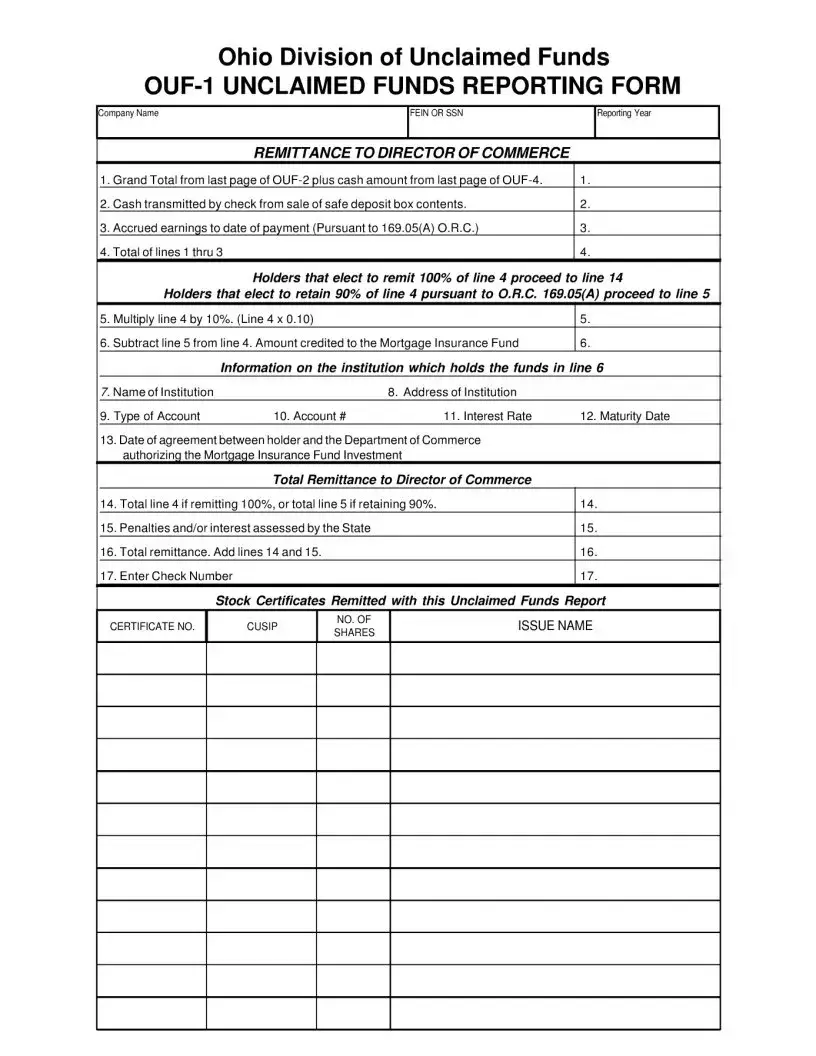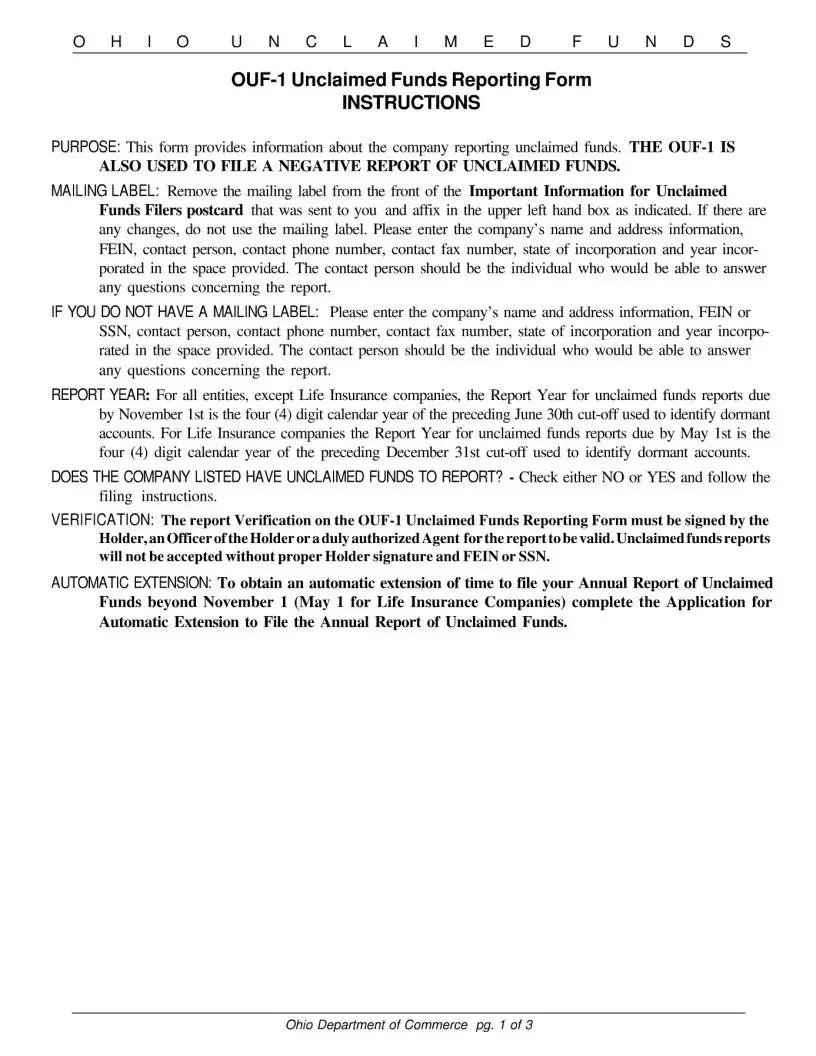Filling out the Ohio Unclaimed Funds Reporting Form (OUF-1) requires attention to detail. One common mistake occurs when individuals fail to use the mailing label provided. The instructions specify that the mailing label should be affixed in the upper left-hand box of the form. If changes to the company’s information are necessary, users should not use the mailing label. Instead, they must manually enter the company’s name, address, and other required details. Neglecting this can lead to processing delays.
Another frequent error is related to the Report Year. For most entities, the report year corresponds to the four-digit calendar year of the preceding June 30th cut-off. Life insurance companies, however, follow a different timeline, using the December 31st cut-off. Misunderstanding these timelines may result in incorrect submissions, which could complicate the reporting process.
Many filers also overlook the requirement for a valid signature on the report Verification section. The form must be signed by the Holder, an Officer of the Holder, or a duly authorized Agent. Without this signature, the report is invalid and will not be accepted. This oversight can lead to unnecessary complications and delays in processing claims.
Furthermore, individuals sometimes forget to provide a Federal Employer Identification Number (FEIN) or Social Security Number (SSN). The form explicitly states that reports submitted without this information will not be accepted. Ensuring that this critical information is included is essential for the successful filing of the report.
Lastly, some filers neglect to check the box indicating whether the company has unclaimed funds to report. This simple step is crucial. Checking "YES" or "NO" helps guide the subsequent actions required for processing the report. Failing to address this can lead to confusion and further complications in the reporting process.



